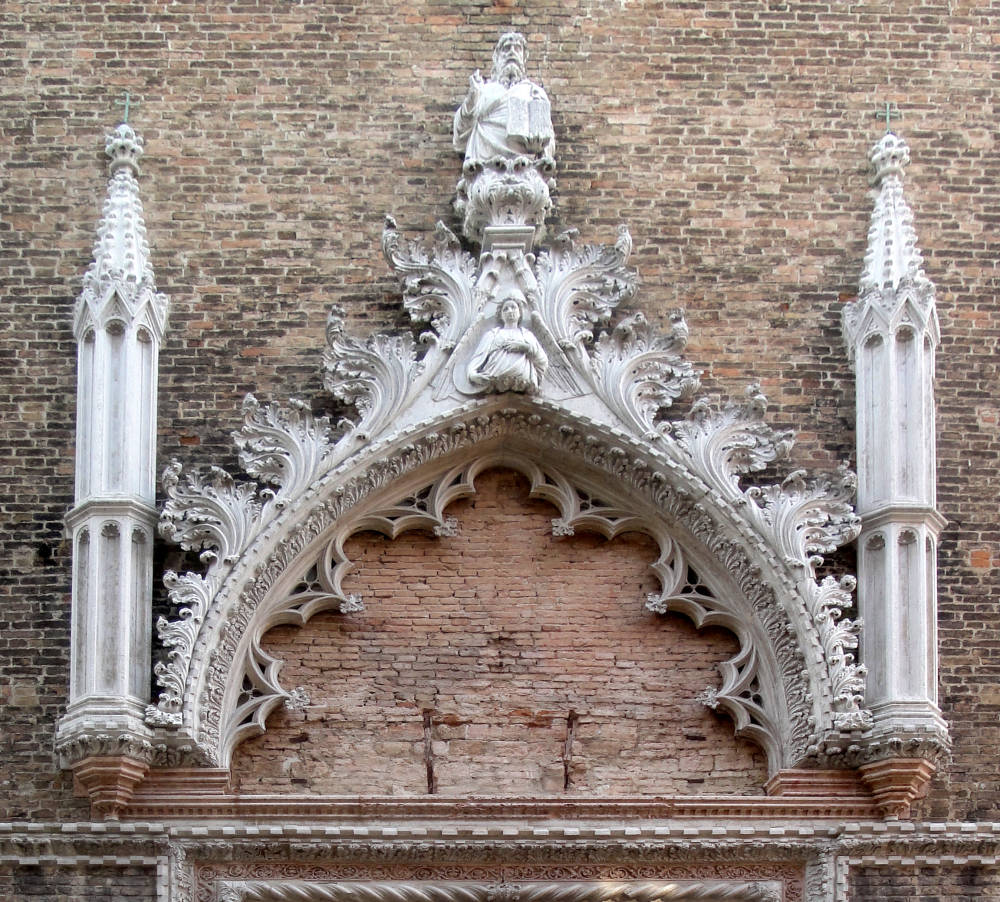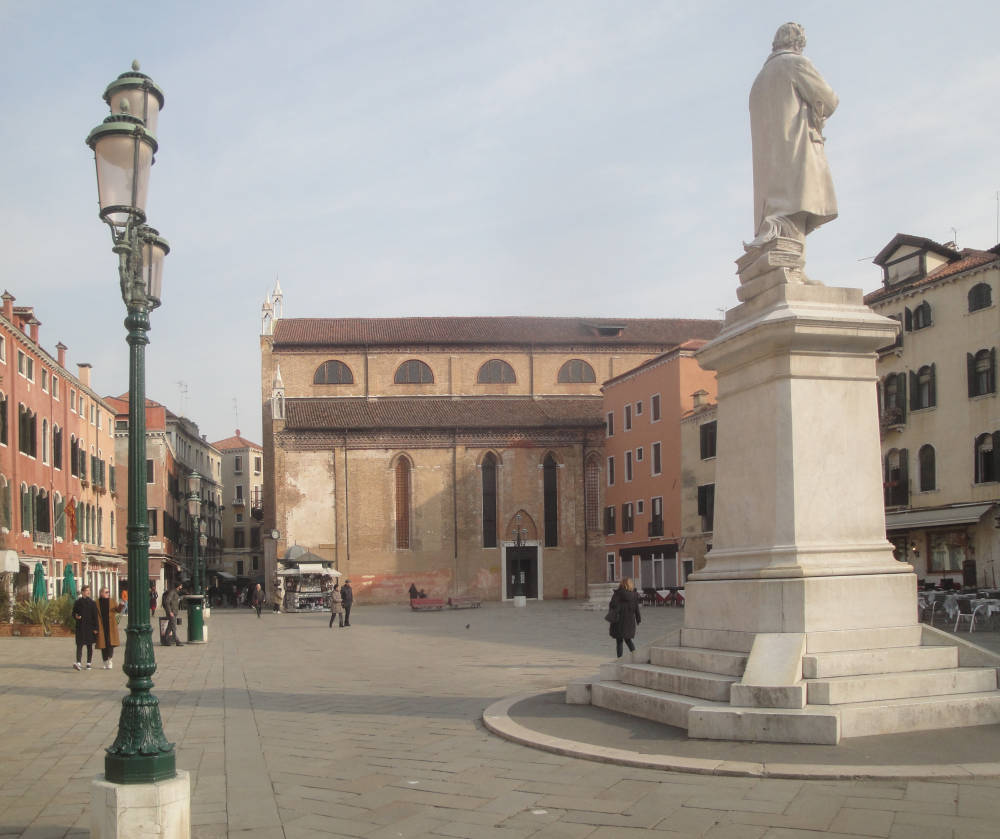

Left: The brick façade of the church with its three pinnacles. Right: Sculpture over the main door. Click on images to enlarge them.
In the third volume of The Stones of Venice’s tourist guide to the city’s architecture Ruskin praises this church as “an interesting building of central Gothic, the best ecclesiastical example of it in Venice. The west entrance is much later than any of the rest, and is of the richest Renaissance Gothic, a little anterior to the Porta della Carta, and first-rate of its kind. The manner of the introduction of the figure of the angel at the top of the arch is full of beauty. Note the extravagant crockets and cusp finials as signs of decline” (11.433-44). Near the beginning of this volume he expands upon this criticism, arguing that “the adoption of a leafy finial at the extremity of the cusps in the door of San Stefano, as opposed to the simple ball which terminates those of the Ducal Palace, is an unmistakable indication of a tendency to decline” (11.13).
In the second volume’s chapter entitled in The Stones of Venice, Ruskin


More of Ruskin's Venice
- St Mark’s Cathedral
- The Palazzo Ducale, Venice
- The Scuola de San Rocco
- Palazzi
- On the Grand Canal
- Leaving the Grand Canal
- On the way to Venice from the mainland
- Venice: Details and Corners
Photographs 2020. [You may use these images without prior permission for any scholarly or educational purpose as long as you (1) credit the photographer and (2) link your document to this URL in a web document or cite the Victorian Web in a print one.]
Bibliography
Ruskin, John. The Works. Ed. E. T. Cook and Alexander Wedderburn. “The Library Edition.” 39 vols. London: George Allen, 1903-1912.
� �
Last Modified 26 March 2020